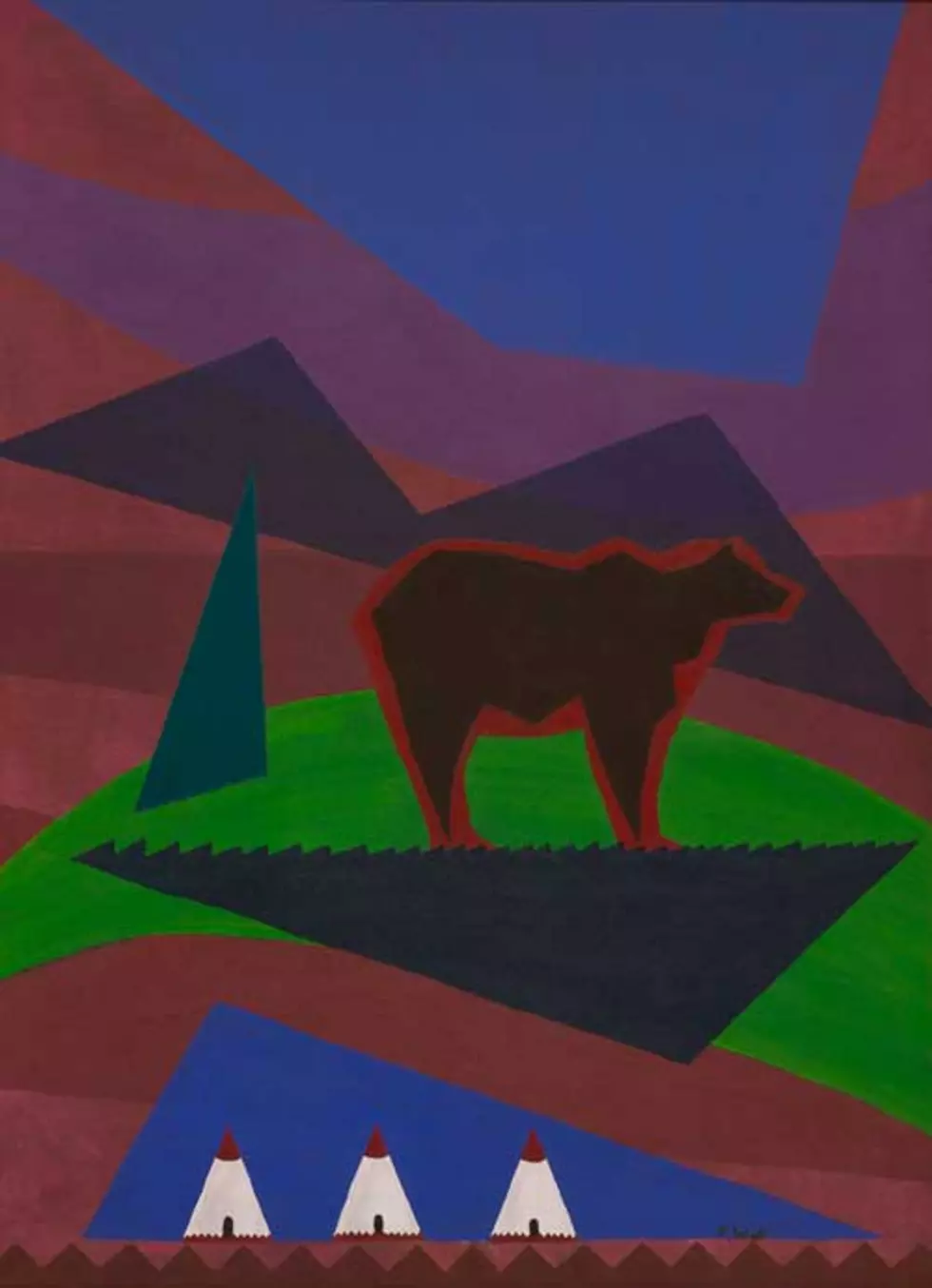
MMAC exhibit to highlight contemporary Native American art
The Montana Museum of Art & Culture at the University of Montana soon will present an exhibition of Native American art spanning across several generations and diverse cultures, from mid-20th century to the present.
“Between Wisdom & Knowledge: Contemporary Native American Art” will run from Oct. 18 to Feb. 16, exploring themes of dislocation – geographical, cultural and artistic – and the diverse and compelling strategies Native artists have used in pursuit of self-realization.
Scholar Gail Tremblay describes it as “an American Indian sensitivity to nature and to cultural constructions visible to an outsider examining U.S. urban culture for its contradictions.”
Works on view in the display will include several generous loans from Montana artists and collectors, as well as recent acquisitions to the MMAC Permanent Collection – most of which have never been publicly exhibited.
Featuring a wide range of media and styles, the exhibition dwells on the competing values of knowledge and wisdom – two paradigms of progress pitted against each other within the doctrine of Manifest Destiny.
Early works on display explore Native costume and pageantry and tribal relationships within the landscape. These concerns recede as artists of later generations turn to consider social, political and cultural transformations and their impacts on indigenous communities.
Recent work in the exhibition sheds light on concerns such as poverty and environmental devastation.
“I am interested in beliefs – past and present, personal and universal – that affect the way we think (or not), the way we treat ourselves, each other and the environment,” said Jeneese Hilton, a member of the Blackfeet tribe whose paintings will be displayed.
In a related vein, dense iconography in works from Corwin Clairmont’s “Lewis and Clark” series traces the impact the settlement of the frontier and subsequent mineral extraction have had on his homeland, the Flathead Reservation.
The vulnerability of cultural legacies plays a central role in other artists’ creative output. Jason Clark’s imaginative prints examine the importance of oral tradition in maintaining the continuity of Creek/Algonquin heritage with the continuing advance of industry and technology. Anthony Yazzie, who recently earned his Bachelor of Fine Arts from the UM School of Art, deploys images of white and Native bodies upon patterns from Navajo material culture to investigate matters of ethnicity in daily life and work.
The exhibition will open with a reception from 5 to 7 p.m. Thursday, Oct. 18, in the UM Performing Arts and Radio/Television Center lobby. Food and refreshments will be served.
A program for the exhibition will take place from 5:15 to 6:15 p.m. Thursday, Dec. 6, and is free and open to the public. Clark will present a gallery talk in the Paxson Gallery.
MMAC’s gallery hours run from noon to 3 p.m. Tuesday, Wednesday and Saturday and from noon to 6 p.m. Thursday and Friday, and it is closed Sundays, Mondays and UM holidays. The museum is open to the public with a suggested $5 donation. Docent tours are available, although advance notice is recommended.
